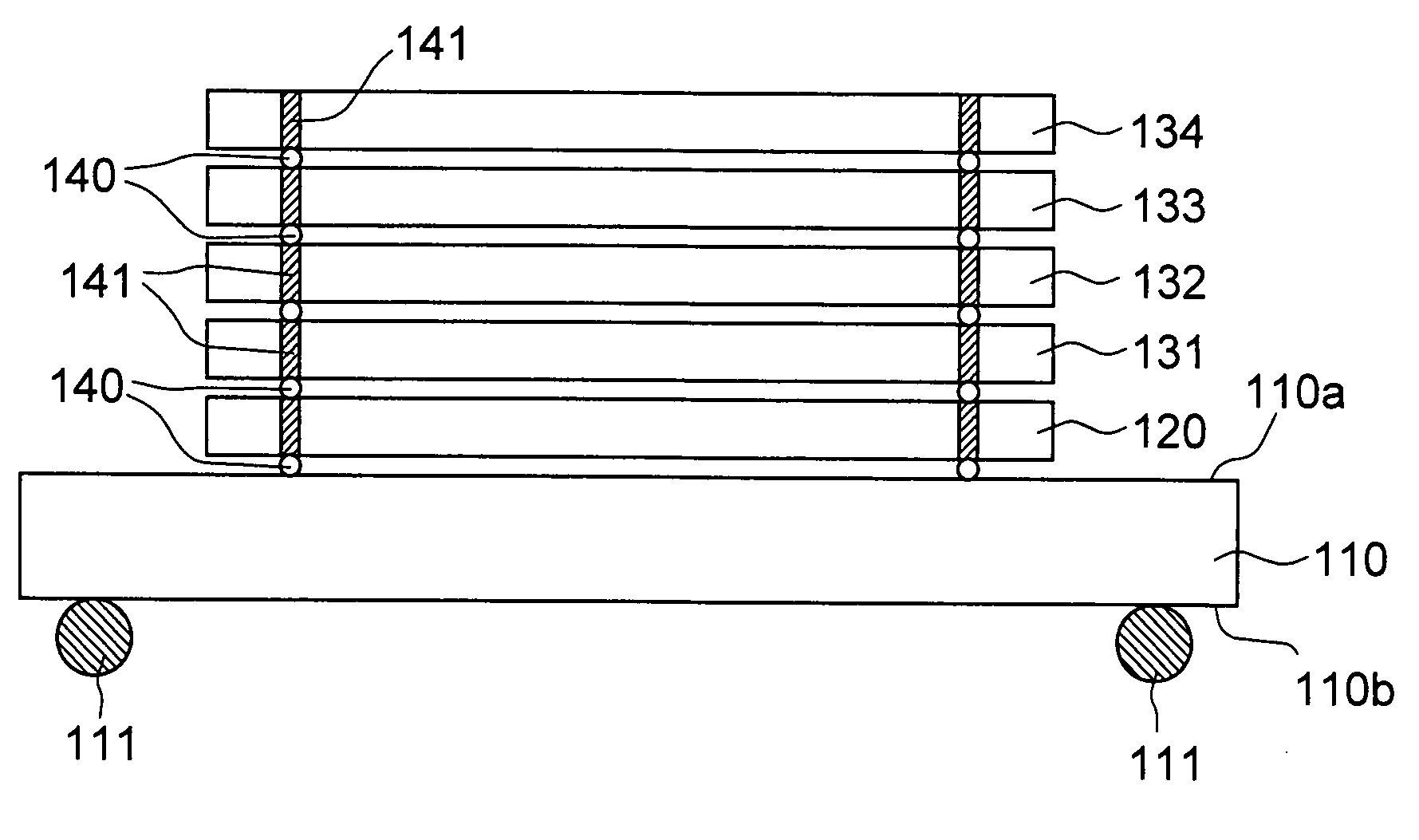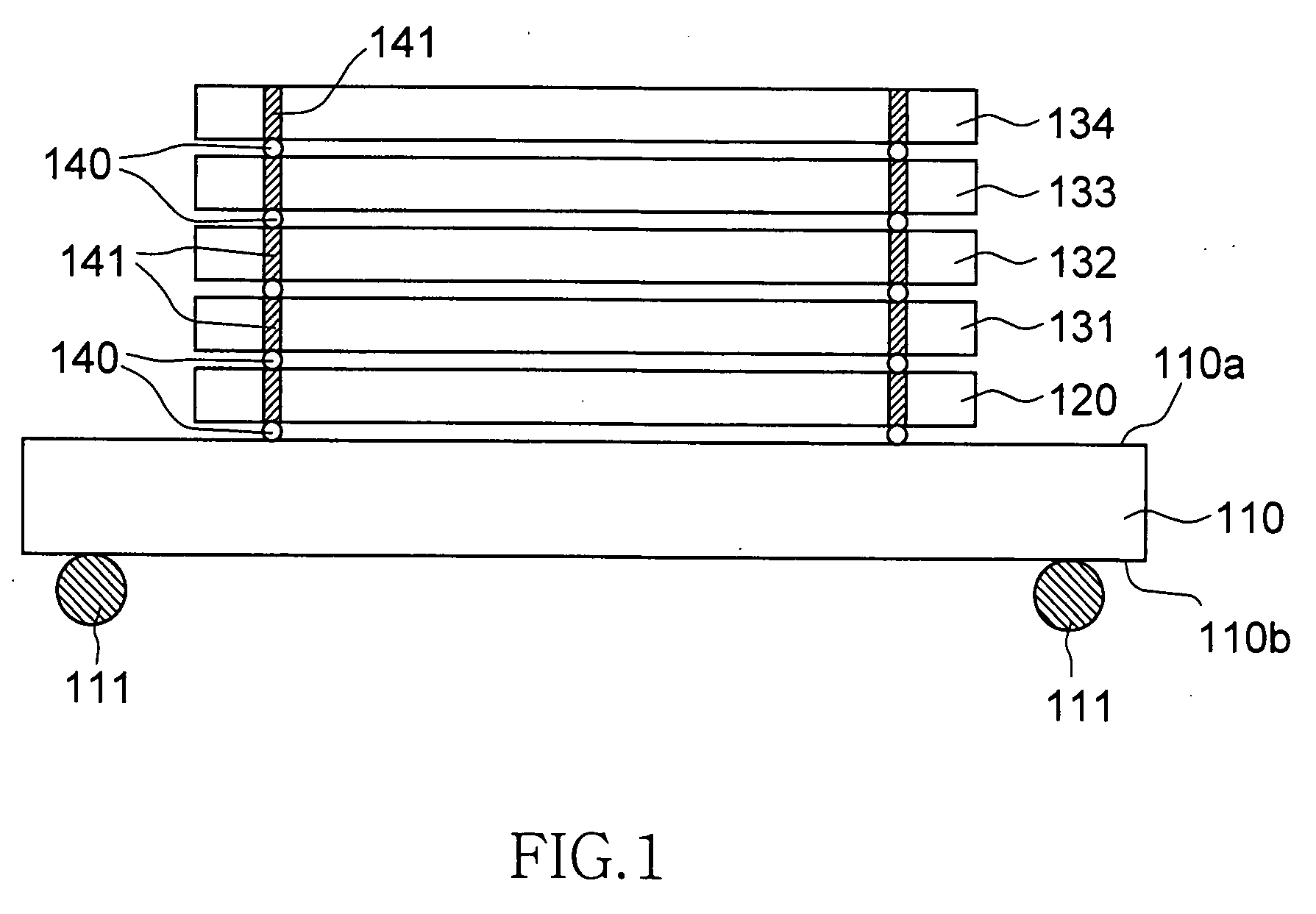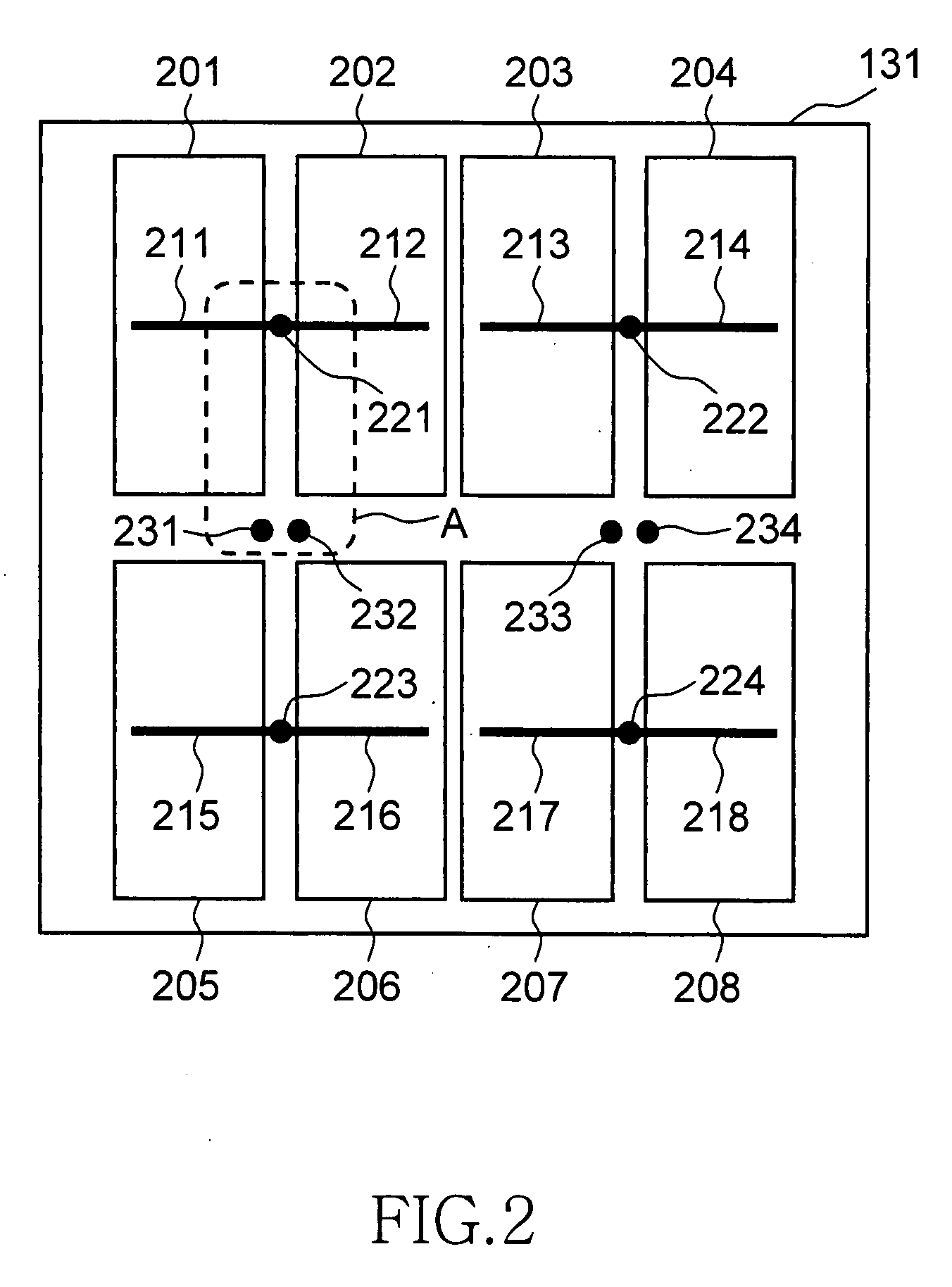Stacked semiconductor memory device and control method thereof
- Summary
- Abstract
- Description
- Claims
- Application Information
AI Technical Summary
Benefits of technology
Problems solved by technology
Method used
Image
Examples
first embodiment
[0033]FIG. 1 is a schematic cross-sectional view showing a structure of a stacked semiconductor memory device according to the present invention.
[0034]As shown in FIG. 1, the stacked semiconductor memory device according to the first embodiment includes an interposer substrate 110, an interface chip 120 mounted on one surface 110a of the interposer substrate 110, and a plurality (four, for example) of core chips 131 to 134 stacked on the interface chip 120. Thus, the stacked semiconductor memory device according to the first embodiment has a structure in which a plurality of semiconductor chips including the plurality of core chips 131 to 134 are stacked.
[0035]Transmission of a signal to and from an external circuit is performed via external terminals 111 arranged on the other surface 110b of the interposer substrate 110. Transmission of a signal between the interface chip 120 and the core chips 131 to 134 is performed via internal terminals 140 and through electrodes 141. In a stac...
second embodiment
[0060]FIG. 6 is a circuit diagram showing a structure of principal parts of a stacked semiconductor memory device and corresponds to an area A shown in FIG. 2. The basic configuration of the entire device is the same as those of FIGS. 1 and 2.
[0061]As shown in FIG. 6, in the second embodiment, the control nodes 241a and 242a of the switch circuits 241 and 242 are supplied with output signals of AND circuits 261 and 262, respectively. One input node of the AND circuit 261 is supplied with an activation signal S11, and one input node of the AND circuit 262 is supplied with an activation signal S12. The activation signal S11 is a signal that corresponds to the memory array 201 included in each of the core chips 131 to 134. When the activation signal S11 is active (high level), the memory array 201 included in each of the core chips 131 to 134 is almost simultaneously activated. On the other hand, the activation signal S12 is a signal that corresponds to the memory array 202 included i...
third embodiment
[0073]Principal parts of a stacked semiconductor memory device have the same circuit configuration as that shown in FIG. 2.
[0074]FIG. 9 is a timing chart for explaining an operation of the stacked semiconductor memory device according to the third embodiment.
[0075]Firstly, before a time t30, the activation signal S1 is inactive (low level). Accordingly, the memory arrays 201 and 202 (memory arrays 201 and 202 included in the core chip 131) that correspond to the activation signal S1 are not activated. Before the time t30, the activation signal S2 is also inactive (low level). As explained above, the activation signal S2 is a signal for activating the memory arrays 201 and 202 included in the core chip 132. Accordingly, the memory arrays 201 and 202 included in the core chip 132 are not activated either. Before the time t30, the selection signals SL and SR are invalid (Don't Care).
[0076]When there is an access request from outside, the activation signal S1 becomes active (high level...
PUM
 Login to View More
Login to View More Abstract
Description
Claims
Application Information
 Login to View More
Login to View More - R&D
- Intellectual Property
- Life Sciences
- Materials
- Tech Scout
- Unparalleled Data Quality
- Higher Quality Content
- 60% Fewer Hallucinations
Browse by: Latest US Patents, China's latest patents, Technical Efficacy Thesaurus, Application Domain, Technology Topic, Popular Technical Reports.
© 2025 PatSnap. All rights reserved.Legal|Privacy policy|Modern Slavery Act Transparency Statement|Sitemap|About US| Contact US: help@patsnap.com



